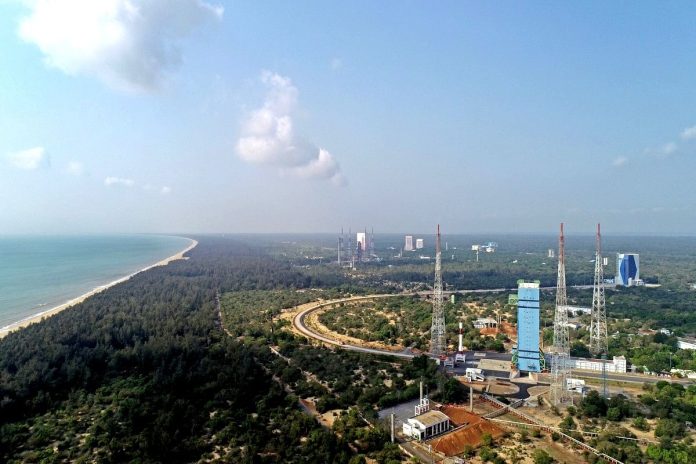Sea erosion has caused the loss of 100 metres of coastline over the past four years in Sriharikota.
The SDSC serves as the country’s sole spaceport for the launch of spacecraft and satellites.
While the success of the Chandrayaan-3 and Aditya-L1 missions is being celebrated worldwide, the Indian Space Research Organisation (ISRO) is facing sea erosion at Sriharikota.
Satish Dhawan Space Centre (SDSC) is located in Sriharikota which is a spindle-shaped island off Andhra Pradesh’s east coast.
Sea erosion has caused the loss of 100 metres of coastline over the past four years in Sriharikota.
To address this issue, the Andhra Pradesh State Coastal Zone Management Authority has given approval for the construction of groynes at India’s spaceport.
Groynes, breakwaters, and artificial reefs are grey adaptation measures commonly implemented to counteract erosion and wave action in coastal areas. A groyne is a shore protection structure built perpendicular to the shoreline of the coast, over the beach and into the shoreface (the area between the nearshore region and the inner continental shelf), to reduce longshore drift and trap sediments.
Groynes, breakwaters (Wikipedia)
The SDSC serves as the country’s sole spaceport for the launch of spacecraft and satellites. It first became active on 9 October 1971, with the flight of the ‘Rohini-125’, a small-sounding rocket, and was initially called as SHAR (Sriharikota Range).
However, the space centre was renamed Satish Dhawan Space Centre in September 2002 to honour mathematician and former ISRO chairman Satish Dhawan.
According to ISRO officials, the groynes project has received in-principle clearance from the authority during a recent meeting in Vijayawada.
While precise details have not been made public yet, The New Indian Express report indicates that the project will involve the construction of five groynes, including two to three larger ones measuring 100 to 150 metres, and two shorter ones of 25-30 metres in length on the northern tip of the island.
Concerns about sea erosion began in 2019-2020 when cyclonic storms caused damage to coastal roads in the area. With the recent damage to a third road, the need to prevent further land loss became even more urgent.
In response, the Satish Dhawan Space Centre (SDSC) sought assistance from the National Centre for Coastal Research (NCCR) to conduct a shoreline study and propose solutions to the problem.
The NCCR conducted a thorough study and developed an integrated management plan to address the issue of sea erosion. These anti-erosion measures have now received approval from the Andhra Pradesh State Coastal Zone Management Authority, marking an important step towards protecting the coastline at Sriharikota.
According to a senior official from NCCR, studies have been conducted on the shoreline of Sriharikota and the surrounding areas. The analysis reveals that erosion is occurring due to both natural factors and human activities. Recent changes in sea level and the presence of low pressure systems have caused an increase in erosion at Sriharikota.
After conducting specific studies on the site, scientists from NCCR have recommended the construction of groynes to address the erosion problem.
Additionally, beach nourishment has been proposed to prevent the issue from affecting nearby coastal villages to the north of Sriharikota. It is important to note that groynes can lead to accretion on the southern side while triggering erosion on the northern side.
Concerns have been raised by ISRO officials regarding the potential erosion threat to Sriharikota from the proposed Adani-Kattupalli port expansion in Chennai. The issue has been brought to the attention of the Centre.
The port expansion plans include the construction of two new breakwaters with a total length of approximately 9.35 km. The new northern breakwaters are expected to be around 6.2 km and 1.3 km, while the new southern breakwater will be approximately 1.85 km.
G Sundarrajan, coordinator of the environmental advocacy group Poovulagin Nanbargal and member of the Tamil Nadu Governing Council on Climate Change, has expressed concerns about the potential impact of the Adani-Kattupalli port expansion on sediment deposits at Sriharikota.
The lengthy breakwaters could block the transport of sand over long distances, exacerbating the erosion problem in Sriharikota. This is one of the many environmental concerns that highlight the need to resist the expansion plans.


